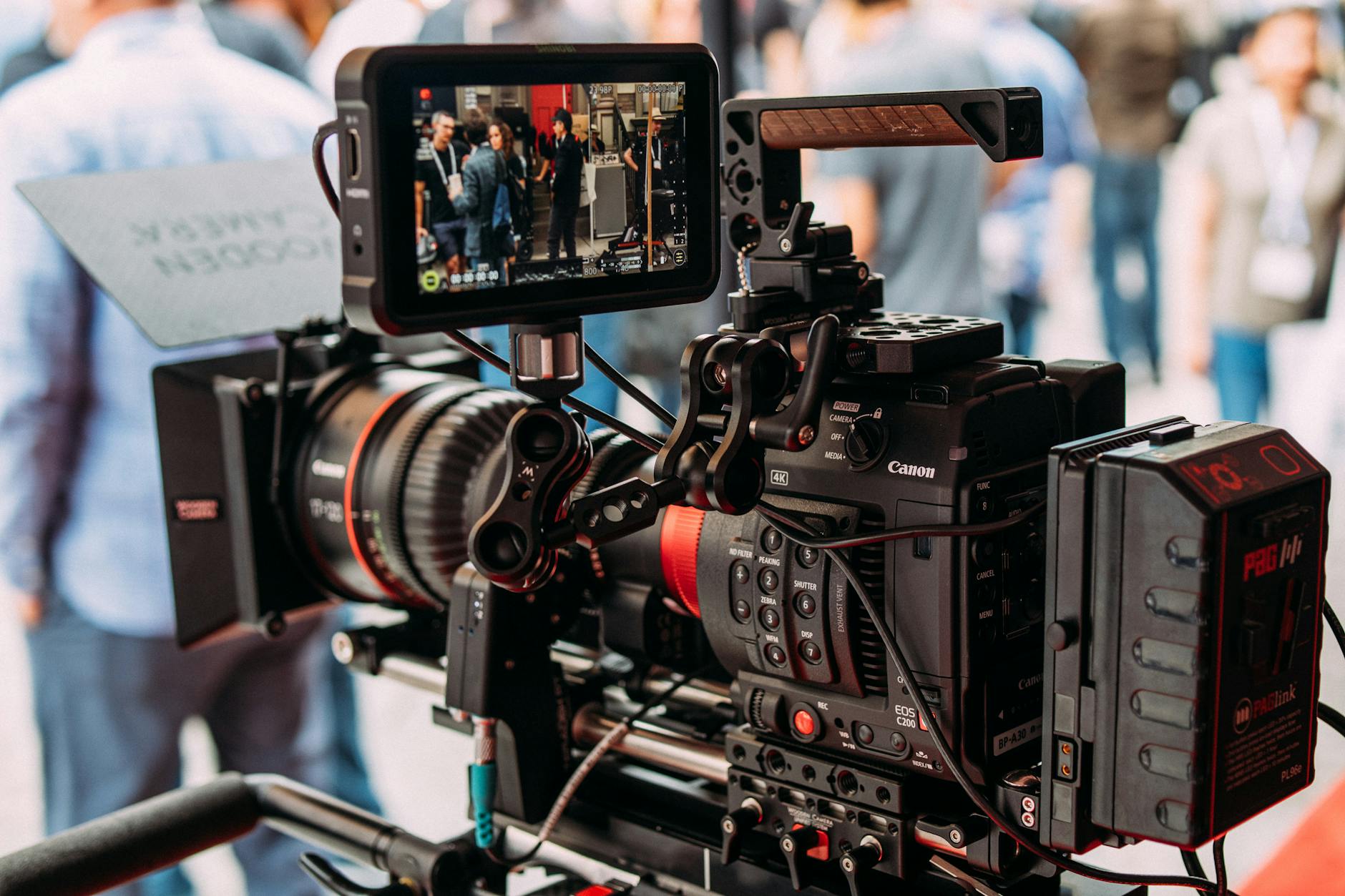Can Music Technology Inspire Creativity in Australia's Classrooms?

Exploring Music Technology
As a session musician in the vibrant city of Sydney, I can't help but appreciate how music technology is revolutionising our educational spaces. Imagine walking into a classroom where an induction loop system subtly enhances the acoustics, echoing the brilliance of the Sydney Opera House. This is just one of the many ways technology breathes life into traditional music education.
Among the arsenal of tools, broadcast solutions play a pivotal role. These systems allow for seamless sharing of musical performances and lectures, fostering an interactive learning environment. It's all about creating spaces where students can experience the thrill of a live performance from the comfort of their classrooms, much like a concert at Darling Harbour.
But what truly stands out are the monitors for video conferencing. These sophisticated tools are not just about connecting students with educators across the globe; they are the gateways to countless opportunities for collaboration and critique. In this dynamic setting, students are encouraged to engage with peers and mentors worldwide, broadening their perspectives and nurturing their creativity.
Integrating technology into music education is not merely an upgrade; it's an innovative approach that equips aspiring musicians with the skills they need to thrive. This blend of traditional musicianship with cutting-edge technology creates an inspiring environment akin to jamming in a bustling Surry Hills instrument store. It's about embracing the old and new, crafting an education experience that resonates with each student.
Benefits for Students
Enhancing Creative Skills
Integrating technology in music education offers aspiring musicians numerous opportunities to bolster their creative skills. Advanced tools, like pro audio equipment, enable students to experiment with sound and compose music that resonates with contemporary trends. Imagine the inspiration drawn from iconic places like the Sydney Opera House, with its acoustic brilliance informing how students perceive and interact with sound. Exploring different genres and experimenting with various audio effects can help students develop their unique musical style, fostering a deeper understanding of the role sound plays in composition.
Improving Engagement Levels
Incorporating technology in music classrooms can significantly boost student engagement. Interactive devices such as tablets and laptops equipped with music software make lessons dynamic and captivating. Students can use av cables to connect their instruments to recording equipment, creating an immersive learning environment that encourages participation and retention. Engaging lessons help maintain focus and make learning feel relevant, linking it to real-world applications like those found at music stores in Surry Hills.
Fostering Collaborative Learning
Music technology also nurtures collaboration among students. Using digital platforms, students can share ideas and work together on projects, simulating teamwork found in professional music settings. Tools such as paging systems facilitate communication during group sessions, ensuring seamless interaction and coordination among budding musicians. These collaborations mimic the vibrant dynamics during music events at Darling Harbour, encouraging students to appreciate the power of collective creativity. Ultimately, integrating technology not only enhances individual skills but also builds a strong sense of community within the music classroom.
Implementing in Schools
Overcoming Initial Hurdles
Incorporating music technology into educational settings often presents initial challenges, but with thoughtful planning and resources, these obstacles can be transformed into opportunities. One primary concern is the budget constraints that schools might face when looking to integrate tech solutions like mesh radios or other audio tools. Engaging local businesses or organisations for sponsorship might alleviate financial pressures. Additionally, organising small-scale fundraising events that spotlight the benefits of music technology could encourage community support.
Teacher Training Essentials
Educators play a pivotal role in successful technology implementation. It’s essential to provide comprehensive training sessions that focus not only on the technical aspect but also on innovative music education techniques. Workshops can feature hands-on experience with tools like a professional microphone setup, allowing teachers to understand its capabilities fully. Resources that highlight the acoustic marvels of the Sydney Opera House could serve as an inspirational benchmark for maximising sound quality in a learning environment. With clear guidance, teachers will become confident facilitators in tech-enhanced music education.
Classroom Set-Up Tips
Creating an engaging setting is crucial for optimal learning experiences. Begin by arranging seating to enable both individual and collaborative exploration. Consider having interactive zones equipped with music technology to cultivate an immersive environment. Ensuring that equipment is easily accessible and user-friendly will encourage student interaction. Not to forget, incorporate inspiration drawn from music events at Darling Harbour, which can energise the atmosphere with elements reflective of live performances. By blending creativity with functionality, classrooms can truly become hubs for musical innovation.
Educator Testimonials
As a creative session musician from Sydney, I have the privilege of witnessing first-hand the transformative power of integrating technology in music education. Over the past few years, several educators have shared their experiences with me, each testament to the rewarding journey of adopting innovative music education techniques. For instance, one teacher illustrated how using digital platforms revolutionised their teaching approach, allowing students to engage with musical equipment in a dynamic way that enhanced their learning.
Integrating Technology into the Curriculum
These educators displayed how vital technology is for keeping students engaged. They employed everything from apps to create digital guitars and basses to virtual collaboration tools that mirrored a real-world musical rehearsal setting. By doing so, they brought the curriculum to life, merging traditional theory with contemporary practice.
Embracing Modern Resources
Educators found that the availability of online resources offered students a plethora of learning opportunities. With technology, students could attend virtual music events at Darling Harbour, learn about the acoustic brilliance of the Sydney Opera House, and even explore the local instrument stores in Surry Hills from the comfort of their classrooms.
These stories showcase the adaptability and passion of teachers who embrace technology to inspire the next generation. They serve as a reminder of how effective the blend of traditional music methodology with modern tech can be in sparking creativity and fostering a deeper appreciation for music in aspiring students.
Best Practices for Integrating Music Technology in Education
Valuing Student Contributions
In an art as personal as music, giving students a voice in their learning journey is crucial. Just like an impromptu session at the Sydney Opera House for its acoustic brilliance, where every musician's input shapes the harmony, encouraging students to share their thoughts on tech tools opens up a world of creative possibilities. Asking for feedback can help identify which digital platforms or instruments resonate best with them—whether it’s using looping software or innovative apps that complement traditional lessons.
Harmonizing Tradition with Modern Tech
Balancing the timeless nature of music with cutting-edge technology is a bit like blending classical acoustics with modern beats at a music event at Darling Harbour. Establishing a harmony between time-tested teaching methods and new tech approaches can inspire students to appreciate both scales and sequencers. Introducing instrument stores in Surry Hills as a resource for both classical and digital instruments ensures students have access to diverse learning tools and environments.
Feedback Loops for Growth
Integrating a feedback loop, much like refining a melody during rehearsals, ensures that the pedagogical approach stays attuned to students' evolving needs. Continuously seeking input from students and educators can help refine tech tools, foster a culture of open communication, and encourage collaboration in future sessions. By doing so, music education becomes a dynamic, ever-adapting entity that remains relevant in nurturing Australia’s next generation of musicians.


